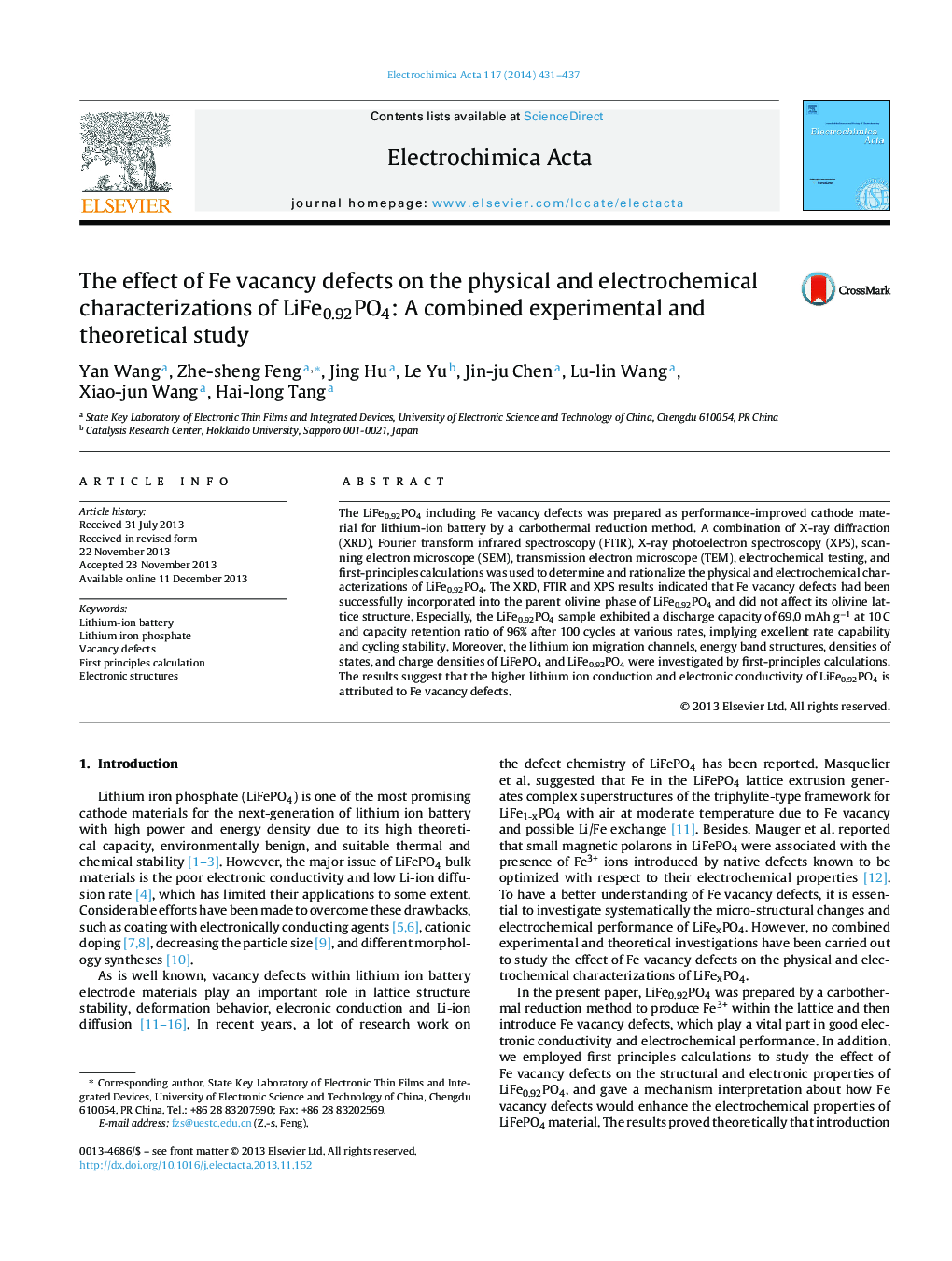| Article ID | Journal | Published Year | Pages | File Type |
|---|---|---|---|---|
| 186746 | Electrochimica Acta | 2014 | 7 Pages |
The LiFe0.92PO4 including Fe vacancy defects was prepared as performance-improved cathode material for lithium-ion battery by a carbothermal reduction method. A combination of X-ray diffraction (XRD), Fourier transform infrared spectroscopy (FTIR), X-ray photoelectron spectroscopy (XPS), scanning electron microscope (SEM), transmission electron microscope (TEM), electrochemical testing, and first-principles calculations was used to determine and rationalize the physical and electrochemical characterizations of LiFe0.92PO4. The XRD, FTIR and XPS results indicated that Fe vacancy defects had been successfully incorporated into the parent olivine phase of LiFe0.92PO4 and did not affect its olivine lattice structure. Especially, the LiFe0.92PO4 sample exhibited a discharge capacity of 69.0 mAh g−1 at 10 C and capacity retention ratio of 96% after 100 cycles at various rates, implying excellent rate capability and cycling stability. Moreover, the lithium ion migration channels, energy band structures, densities of states, and charge densities of LiFePO4 and LiFe0.92PO4 were investigated by first-principles calculations. The results suggest that the higher lithium ion conduction and electronic conductivity of LiFe0.92PO4 is attributed to Fe vacancy defects.
